Disclosure: Meeple Mountain received a free copy of this product in exchange for an honest, unbiased review. This review is not intended to be an endorsement.
If you know me, you know I’m a fan of Carcassonne. I talked about the base game at length with Andrew Holmes, and many of the early expansions were the basis for my earliest reviews posted on Boardgamegeek. I recently had a chance to sit down to play and review Mists Over Carcassonne. Heck, I even reviewed My First Carcassonne.
My Carcassonne journey has been a pretty good one, but there’s always been one thing I’ve regretted. Back in 2012, six mini-expansions were released for the game, each containing a single tile for a seventh expansion. Life circumstances, coupled with the FLGS I frequented closing its doors, conspired to prevent me from acquiring them at the time. Before I knew it, the opportunity was gone. The aftermarket prices on Ebay and the GeekMarket were obscene. Those six mini-expansions were seemingly forever out of my reach.
And then Carcassonne Big Box 4 came along later that year and changed all of that. Ever since then, I’ve longed to get my hands on one of the Big Boxes, but the price was always just slightly too high for me to justify the purchase, considering I already had everything else in the box. But eleven years later, my copy of Carcassonne has expanded beyond the limits of what the base game box can hold and is spread across multiple boxes. I was in a position where I not only wanted those early mini-expansions, but I also needed a better storage solution.
It was Big Box time.
A Brief History of the Big Box
Since the first Carcassonne Big Box was released in 2006, there have been a total of seven different variations. Each iteration has been slightly different from the others, but they all have a few things in common. Each contains the base game along with the River, Inns & Cathedrals, and Traders & Builders expansions (with the exception of Big Box 4 which did not contain Inns & Cathedrals).
Others have included the Princess & the Dragon, Abbey and Mayor, River 2, Wheel of Fortune, The Tower, and Hill & Sheep along with Bridges, Castles, & Bazaars and Count, King, & Cult. I will not be discussing any of these expansions in this review because this review is focused on Big Box 7 (released in 2021).

Big Box 7 includes the aforementioned River, Inns & Cathedrals, and Traders & Builders expansions along with the seven mini-expansions (The Flying Machines, The Messengers, The Ferries, The Gold Mines, Mage & Witch, The Robbers, and Crop Circles) and The Abbot, which came into existence when Marcel Gröber became the primary artist, taking over from Doris Matthäus. As a result, The Abbot can only be found in Big Box 6 and onward.
I will be talking about all of these in this review: what they come with, how they’re played, and what they add to the game overall. I will not, however, be doing a deep dive into how the basic game is played. If you need a refresher, then go check out my conversation with Andrew that I linked to earlier and then come back.
Ready? Then here we go.
The Classics
The River
One of the earliest expansions for Carcassonne, the River expansion consists of 12 river tiles, which replace the base game’s original start tile. These river tiles are placed out, one at a time, during setup, to form a meandering river that is broken up by a series of roads and city pieces.
While the River doesn’t add much to the game mechanically, it does breathe some new life into the game by breaking up the field. In fact, it’s pretty common to see players dropping farmers right away, a thing that almost never happens when playing with the classic start tile.
More importantly, the River expansion highlighted just how easily the addition of a few extra tiles could change the entire makeup of the game.
Inns & Cathedrals
Inns & Cathedrals, Carcassonne’s first big expansion, introduced players to some new physical components—scoring tiles and ‘big meeples’ which count as two meeples—but it also introduced the titular Inns and Cathedrals.
Inns are located alongside roads. If an Inn is incorporated into a road that scores, then each tile in that road scores double the points. Similarly, Cathedrals are city tiles that are open on all four edges. If a Cathedral tile is incorporated into a finished city, then every tile in that city scores three points (and every banner scores three points) instead of their normal two. But, the kicker is: if you’ve begun a feature that includes an Inn or a Cathedral tile and that feature isn’t completed by the end of the game, then you will receive zero points for the feature.
As you can well guess, this expansion creates an impetus to sneak onto other peoples’ features or, if all else fails, to try your best to prevent them from completing them. It’s such an easy expansion to incorporate that I never play without it. And, even if I did leave out the tiles, I would never leave out the big meeple. While the tiles will take up more space and add extra time to the game, there’s no reason to ever play without the big meeple.
Traders & Builders
Like the big expansion that came before, Traders & Builders, Carcassonne’s second expansion, also includes some new physical components. The first is the pig meeple. The pig meeple can be added to a farm where a player has at least one farmer already placed. If that player controls the field at the end of the game, the pig makes the field more valuable, scoring four points per completed city as opposed to three. The other is the builder. The builder meeple can be added to any incomplete road or city feature on which the player already has another meeple. If this feature is later extended, the player can remove their builder to take another turn. Of the two, the builder is the strongest by far, leading to some powerful, and satisfying, turns. As such, I never play Carcassonne without the builder. The pig is interesting, but it doesn’t bring much to the table.
The other part of this expansion introduces the ‘trading’ aspect implied by the expansion’s title. Included with the expansion are several city tiles featuring one of the expansion’s three different commodities. If any of these tiles are present in a city when a player completes it, they gain the matching commodities from the supply. At the end of the game, the player with the most of each commodity earns an additional ten points for that commodity. Ties are friendly and each tied player earns the full ten points.
That’s an extra thirty points up for grabs, which can be incredibly swingy. That’s one of the reasons I recommend that you include this expansion every time you play Carcassonne. But the other reason is one that isn’t immediately obvious: commodities are awarded to the person completing the feature, which is not necessarily the person scoring for the feature. Before Traders & Builders, there was no impetus to complete another player’s features other than to prevent them from getting too large. Traders & Builders forces you to think about things in new and interesting ways, and I really love that.
The Mini-Expansions
Each mini-expansion, with the exception of one, consists of eight tiles. Originally, though, each mini-expansion came packaged in its own box with a total of nine tiles—the eight tiles which made up the expansion and a ninth tile which made up 1/6th of the Crop Circles mini-expansion.
The Flying Machines

Aside from the eight tiles included with this expansion, there is also a six-sided die with each die face containing one to three pips. Each tile in this expansion features a flying machine icon with an arrow pointing off in a specific direction.
A player placing one of these tiles may place a worker as normal, or they may place it as a flier. Placed as a flier, the player rolls the die and the meeple moves in the indicated direction a number of tiles equal to the pips on the die. That worker can be placed onto any incomplete feature, excepting fields, even if that feature already contains someone else’s meeple.
My Thoughts: Without a doubt, this expansion is one of the most in-your-face aggressive expansions that exist for Carcassonne. In my conversation with Andrew, I spoke of the “divorce expansions”—those expansions that are so aggressive that they threaten the very fabric of the peace in your home—and this one falls squarely in that camp. It is devastatingly effective at what it does, particularly if you’re playing a game with only a handful of expansions included.
The Messengers
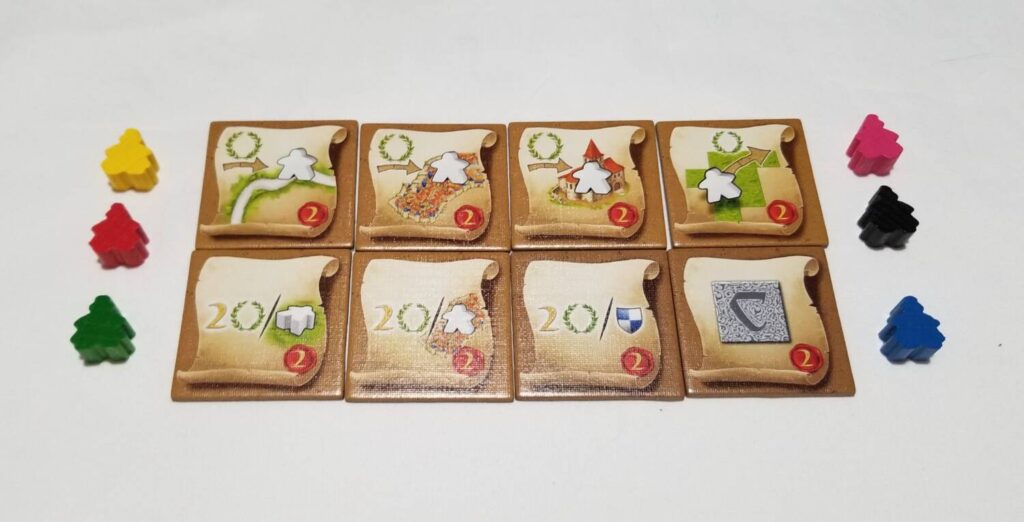
Each tile included with The Messengers expansion contains some unique iconography that describes what benefit the tile imparts. During setup, these tiles are shuffled together and placed into a facedown stack close by.
Each player also receives a Messenger meeple which is placed onto the scoring track along with their normal scoring meeple. As players earn points over the course of the game, they decide which of the two meeples are moved to track the points gained. If the meeple should wind up on a space that is divisible by five (including the 0/50 space), the player will draw the top tile from the Message tile pile, perform its action (if they choose), and place the tile back onto the bottom of the stack. With the exception of one tile which allows the player to draw and place an additional tile, each tile allows the player to perform some kind of intermittent scoring.
My Thoughts: The Messengers expansion is one that awards careful planning and careful scoring. It is particularly useful to players that avoid going for massive scoring opportunities, focusing on smaller ones instead. Used cleverly, it is possible to chain these scoring opportunities together, using one to move one of your scoring meeples up to the next threshold to uncover a new tile, moving the next to another threshold, and so forth. Turns like these are very satisfying. And, the best thing is, since these expansion tiles exist outside of the central tableau, adding them in doesn’t increase the playtime, or the physical space needed, in any significant way. So, there’s no reason to ever NOT play with this one.
The Ferries

The Ferries expansion consists of eight Lake tiles—featuring four road segments that end at a centralized lake—as well as a number of wooden ferries, whose shape and size resemble Catan road segments that have been cut in half.
A person placing one of the Lake tiles will first place one of their workers onto the tile, per the normal rules, on either one of the roads or into one of the fields. Then, they must place a ferry onto the tile, connecting any two of the road segments. When it comes to those Lake tiles, it is important to keep in mind that each of those road segments that touch the lake are considered to end the road they’re a part of. So, on any Lake tile, there will always be two roads that are ending and two that will have merged together to form one solid road. Later, if a player extends a road that has a Lake tile as part of it, they will have the opportunity to adjust the ferry on that tile, potentially re-opening roads that have already been scored.
My Thoughts: This mini-expansion, while interesting, is one of the least impactful of the bunch. I’ve only played with it a handful of times and it was pretty unremarkable. Maybe I’m just using it inefficiently, but I never experienced one of those “AH HA!” moments where everything suddenly clicks and falls into place, when using this expansion. I like manipulating the little ferries just fine, but I’d be lying if I told you that this is an expansion you just can’t live without.
The Gold Mines
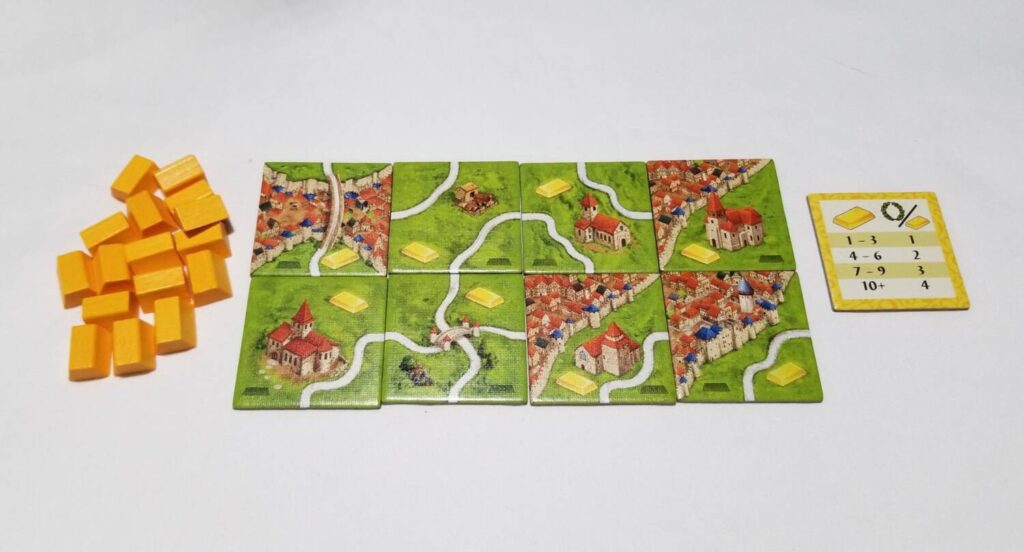
The Gold Mines mini-expansion consists of eight tiles with gold symbols on them and sixteen tiny wooden gold bars. When a player adds one of these tiles to the central tableau, before placing their meeple as they normally would, they first place a gold bar onto a feature on the tile and an additional gold bar onto a feature of a neighboring tile, even if the neighboring tile already has a gold bar on it. Later, when a feature that has gold bars on it is scored, the person receiving the points collects all the gold bars that were on that feature. Gold bars rewarded for ties are split evenly among the players beginning with the person that caused the feature to be scored and going in clockwise order until all of the gold bars have been distributed.
At the end of the game, the players will score varying amounts of points per gold bar based on how many bars they’ve collected overall. For instance, if you’ve only collected between one and three gold bars, they’re worth a single point each. But, if you’ve managed to collect ten or more, then they are worth four points apiece.
My Thoughts: Much like the Traders & Builders expansion, the Gold Mines mini-expansion has the potential to generate a massive number of points in the end game, provided you were fortunate enough to be able to take advantage of what it offers during the course of the game. I really enjoy the spatial puzzle element introduced as you try to figure out ways to fit the gold bars into your own designs while simultaneously trying to avoid providing opportunities for your opponents to capitalize, or trying to figure out how to trigger a gold bar payout to yourself by setting up a feature for someone else to score. Or, maybe they’ll avoid scoring in an attempt to deny the gold bars to you, thereby leaving that scoring opportunity to you instead.
In short, there’s a lot to think about in this mini-expansion. The feeling you get from watching your clever schemes bear fruit is very rewarding. And, those points at the end of the game don’t hurt either. This is one of the stronger mini-expansions on offer and I highly recommend it.
Mage & Witch
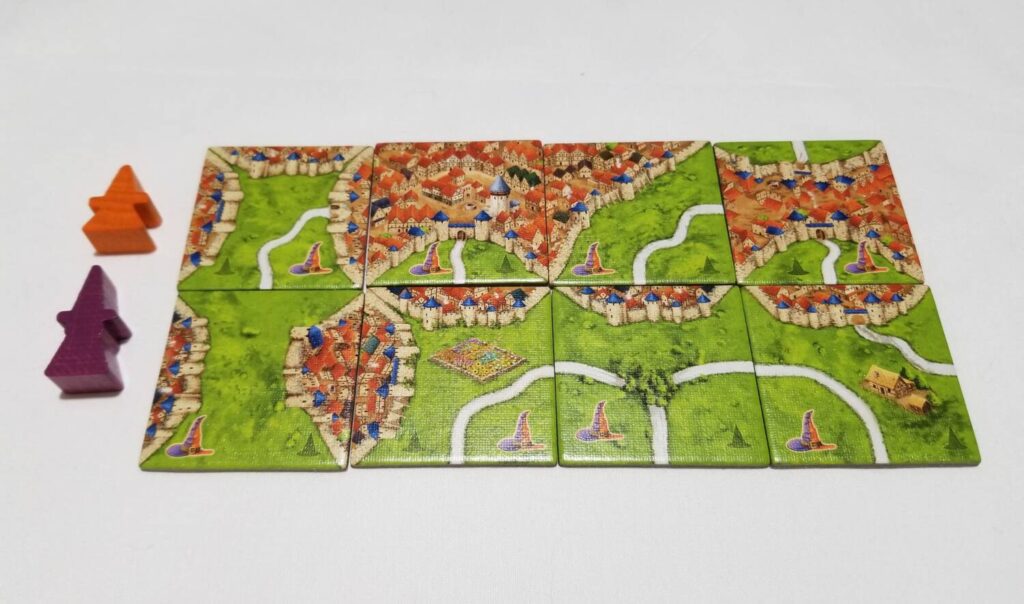
Mage & Witch is composed of eight tiles, each featuring a mage symbol. Additionally, two pawns are included: a purple mage and an orange witch. When one of these tiles are added to the tableau, the person adding the tile chooses to move either the mage or the witch to any incomplete feature in the game. If that feature is completed while either the mage or the witch is on it, then it either pays out twice as many points when it is scored (the mage) or provides half the number of points (the witch). After that, the pawn is removed from the board to be added back at a later time.
My Thoughts: I like Mage & Witch and the interesting, diametrically opposed decisions it forces a player to make. Firstly, you’re required to move one or the other. So, right out of the gate, you’ve got to decide which you’re going to move. And then you’ve got to figure out where you’re going to move it to. Do you play nice and move the Witch to a feature that’s uncontested and not likely to score anyone any points? Or do you try to stick it to an opponent? If you’re stuck with the Witch, do you pass it on to someone else or do you offset it by gaining the Mage instead? Or, do you avoid one or the other entirely? Maybe you want to try and foster good will by blessing someone else with the Mage instead in the hopes that they’ll just leave you alone when they find themselves faced with the decision you’re faced with. There are a lot of factors to consider, making this one of the juicier mini-expansions of the bunch.
The effects of this expansion aren’t as noticeable in a three or more player game, but they are particularly potent at the two player count. Because of this, like the Flyers, Mage & Witch falls squarely in “divorce expansion” territory. So, if you’re playing with a partner, be forewarned.
The Robbers

The Robbers mini-expansion includes six robber pawns in each of the game’s different colors. When a player adds one of this expansion’s tiles to the tableau, they will have the opportunity to add their robber pawn to the scoring track next to another player’s scoring pawn (or move it to a different player’s scoring pawn if it’s already been placed). The next player in clockwise order may also add their robber pawn to the board if they have not done so already.
Whenever that other player is the active player and does something that causes their scoring pawn to move, the player who has a robber next to the active player’s scoring pawn will earn half as many points as the player who is scoring, moving their own scoring pawn and removing their robber from the board.
That may sound confusing, but in practice, it’s pretty straightforward. Player A adds their robber pawn next to Player B’s scoring pawn. Later, Player B scores six points. Player B moves their scoring pawn six spaces. Player A moves their own scoring pawn three spaces (half of six) and removes their robber pawn from the scoring track. Easy peasy.
My Thoughts: Out of all the mini-expansions, this is the least remarkable one. While it’s interesting to see a mini-expansion that explores using the scoring track as a scoring mechanism, The Robbers just doesn’t do it very well. Where The Messengers knocked it out of the park, The Robbers swings for the fences and misses the ball entirely.
On paper, it would seem like this mini-expansion would garner the players a lot of points, but it almost never does. When you’ve got a robber sitting next to your score pawn, inevitably your focus shifts to scoring the smallest thing possible. Unless the opponent you’ve placed your robber on has been working on a massive, sprawling city and they’re getting towards the bottom of the tile stack (meaning they’re likely desperate to complete the feature before time runs out), this mini-expansion almost never pays off the way you think it would.
Crop Circles
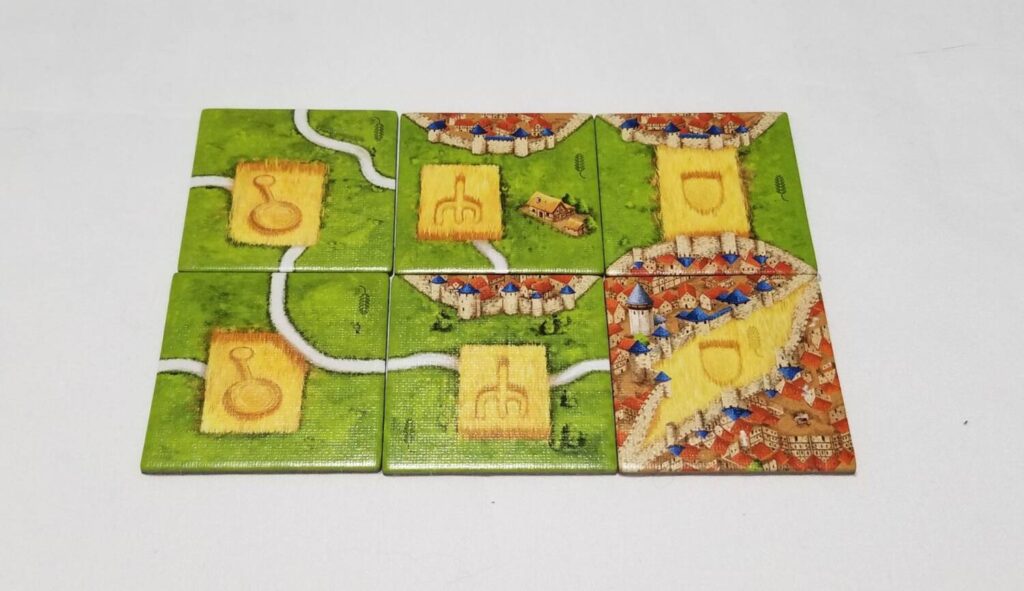
The Crop Circles mini-expansion—a bit of a misnomer since only one of the tile types contains a shape even remotely resembling a circle—is composed of six tiles, with two copies of each. Each tile contains a different type of crop formation which corresponds to a different type of scoring feature; the rake symbol corresponds to farmers in fields, the club symbol corresponds to highwaymen on roads, and the shield symbol corresponds to knights in cities.
When playing one of these tiles into the tableau, the player has to make a choice between adding one of their meeples to one of their other meeples on a feature matching the played tile or removing one of their meeples from a feature matching the played tile, if they have a meeple matching the type in play. Otherwise, they still make the decision as if they did have a meeple. Then, all their opponents must perform the same action if they are able. The chosen action is then carried out in clockwise order starting from the person to the left of whoever placed the tile and made the decision. The person playing the tile does not perform the action until everyone else has done it.
My Thoughts: Crop Circles is, hands down, the strongest mini-expansion of the bunch. Fighting for dominance over a feature that hasn’t been scored yet? This might be your chance.
In this example, it might seem like your opponent would just add a meeple on whichever feature you were trying to one up them, but remember: the person playing the tile does not perform the action until everyone else has done it. This little rule is ingenious, allowing you to react to whatever your opponents opt to do. Maybe they double up on the feature you were hoping to beat them out on. If so, you can just double up yourself and nothing’s changed. Or, you could just decide to let it go and focus your efforts elsewhere.
But if you ask me, more exciting than being able to double up a meeple on a specific feature is the ability to remove one of your meeples from a specific feature entirely. In Carcassonne, whether through overconfidence, poor planning, bad luck, or clever tile play on your opponents’ behalf, you will often find yourself bereft of meeples, unable to capitalize on emerging scoring opportunities. Having a way to recall those useless meeples is a game changer.
The New Kid on the Block
The Abbot
The Abbot expansion introduces several Garden tiles across the base game and the two large expansions in this Big Box. There are also new Abbot meeples for each player.
When playing a tile with either a garden or a monastery, a player may place their Abbot meeple onto the garden or the abbey. Abbeys are treated as usual—once the tile is completely surrounded, they’re worth nine points when they score (provided they score during the game and not at the end when only partial points are awarded). Gardens score exactly like abbeys.
However, the player doesn’t have to wait for the feature their Abbot has been placed upon to become surrounded in order to score it. In lieu of placing a meeple on a future turn, the player can opt to score their Abbot meeple instead.
My Thoughts: I have been playing Carcassonne since sometime in 2002 (over twenty years now!). When Carcassonne was first reprinted with its new artwork and the new Abbot mini-expansion was announced, I was excited. I really wanted that mini-expansion and it was my fervent hope that some kind of “Abbot upgrade pack” would be introduced so that I could swap out my existing tiles with the new ones that had gardens added to them. Alas, that never came to pass and I was stuck knowing that if I wanted the Abbot, I’d have to buy Carcassonne all over again—a thing I had no desire to do.
The Big Box changed that. Now that I’ve got an entirely new base game, I have had the opportunity to lay the tiles out side by side next to their original base game counterparts to compare them, and here is what I discovered: with the exception of the eight Garden tiles, the tiles in the original base game are exactly the same as the tiles in the newer version of the base game.
Of course, me being a fan of the Doris Matthäus aesthetic, I replaced all of the tiles in the newer versions of the game and its expansions with the originals, replacing only the tiles that featured the gardens on them. Sure, it looks a little awkward with the two different styles mixed up on the board, but until my fantasy becomes reality and Hans im Glück releases the “Doris Matthäus Abbot Expansion Mega Upgrade Pack”, it’ll just have to do.
Why go through all of that effort for a mini-expansion? Well, for starters, the Abbot is so easy to incorporate that there’s zero reason to ever play without it. If you’ve got a Carcassonne set that includes the Abbot, then you’ve already got the Garden tiles to go along with it. There’s nothing else you need to add to your setup other than giving the players their extra meeple.
Secondly, it’s just a really well-designed addition to the game, both in its minimalism and its overall impact. In the original version of Carcassonne, abbeys were always a gamble and it could be frustrating—nay, downright soul-crushing—to have your meeples stuck out there on abbeys that were never likely to be completed. The Abbot gives you a lot of flexibility in this regard. It’s also nice to have an option out there to be able to score a few points when your tile draws aren’t helping you complete anything.
Final Thoughts On the Carcassonne Big Box
Overall, I’m pretty happy with this specific collection of Carcassonne material. That being said, I do wish that they’d release a Big Box containing just expansion material or, at the very least, a Big Box that contained something other than the traditional base game + Inns & Cathedrals + Traders & Builders combination. It would be nice to see some of the later expansions represented.
Another small quibble is that there is an awful lot of wasted space in this box. Don’t get me wrong, what’s there is very well organized. But, does the box really need to be this large? Not really. It could have been half the size and comfortably accommodate everything that’s contained therein.
I don’t mind the wasted space personally. For someone like me who’s got a ton of Carcassonne stuff and no good way to store it in one place, the wasted space is a godsend, but it’s still worth mentioning.

These are just minor quibbles at best. I’m a pretty happy camper. I cannot overstate how amazing it is to finally own these mini-expansions. And the Big Box came with a nice bonus that I wasn’t expecting. At the back of the rules booklet, there is a tile almanac—a thing that is a lot less useful now than it would have been twenty years ago when none of the Carcassonne tile sets had their own special icon printed on their tiles, but still appreciated nonetheless.
In short, the Carcassonne Big Box #7 is pretty great. It’s packed with a lot of good content and comes with plenty of room if you ever decide to really expand your collection. Even if you don’t, there’s plenty here to keep you entertained and occupied for years to come.


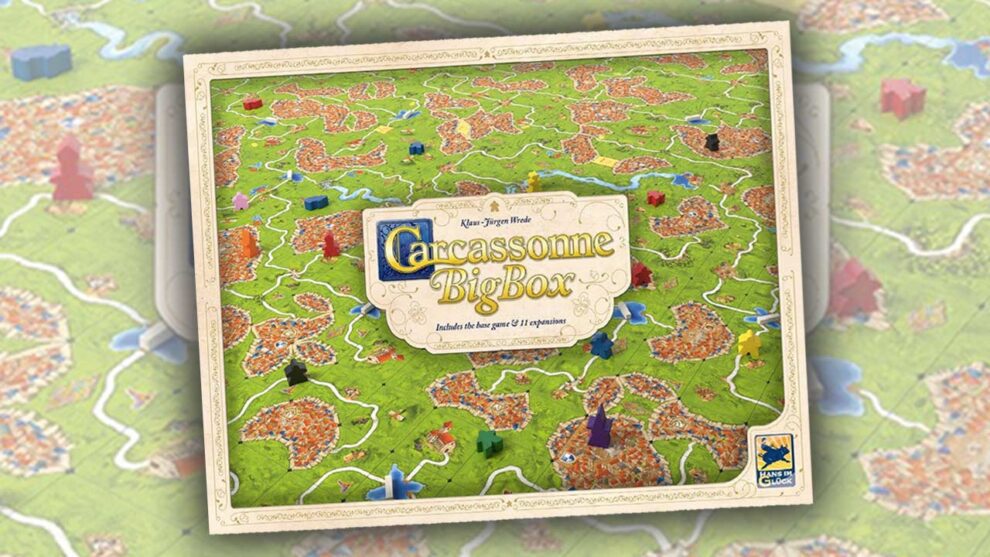

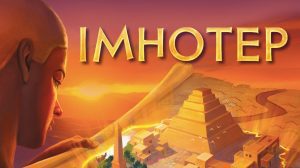
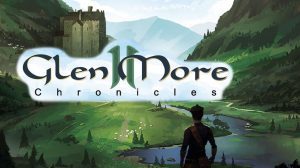






Great review! Very entertaining. One small correction re: The Gold Mines mini-expansion; the gold bars on a tile are not feature-specific. So if a feature is completed, the bars just have to be on the tile in order to collect them.